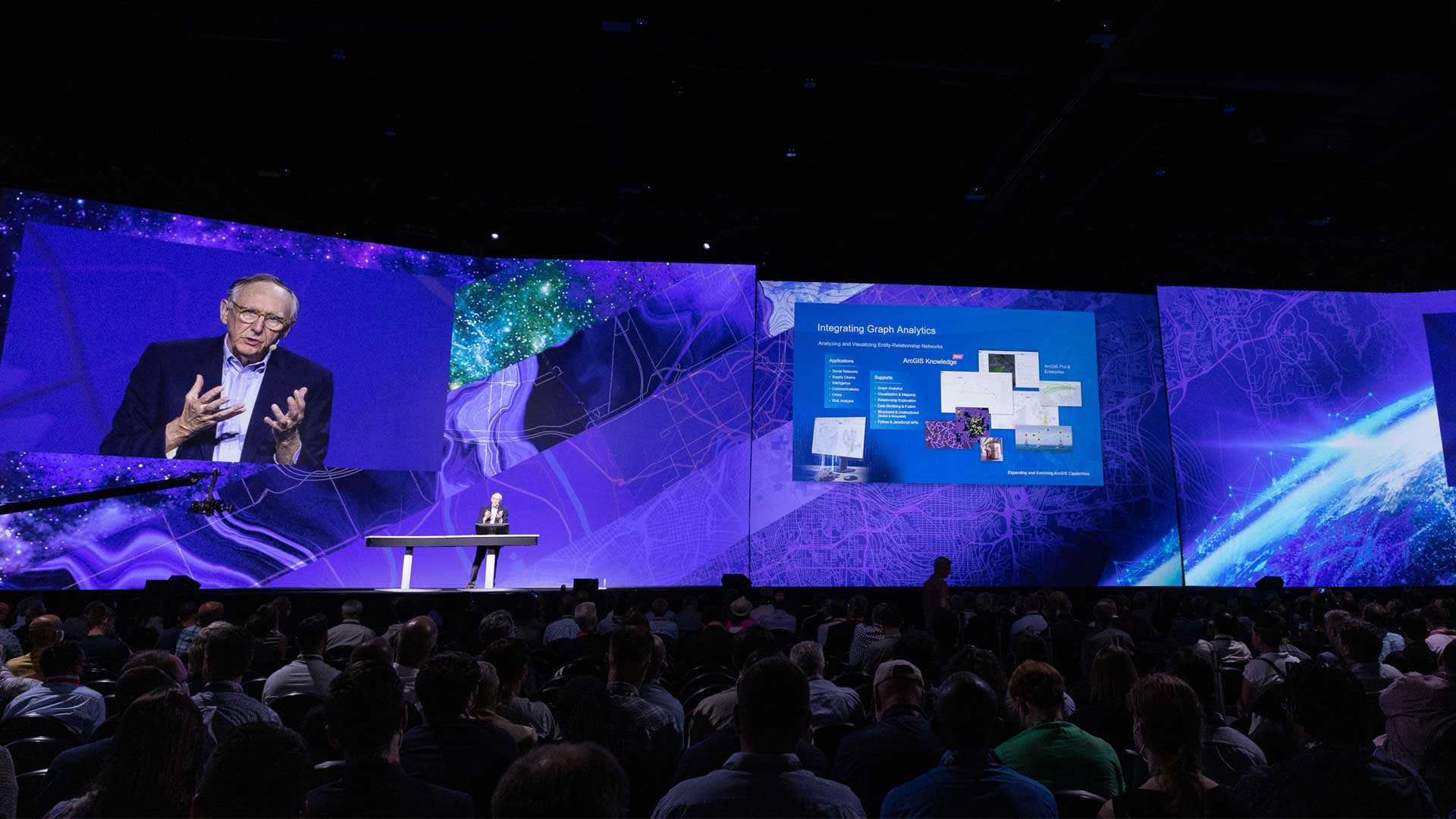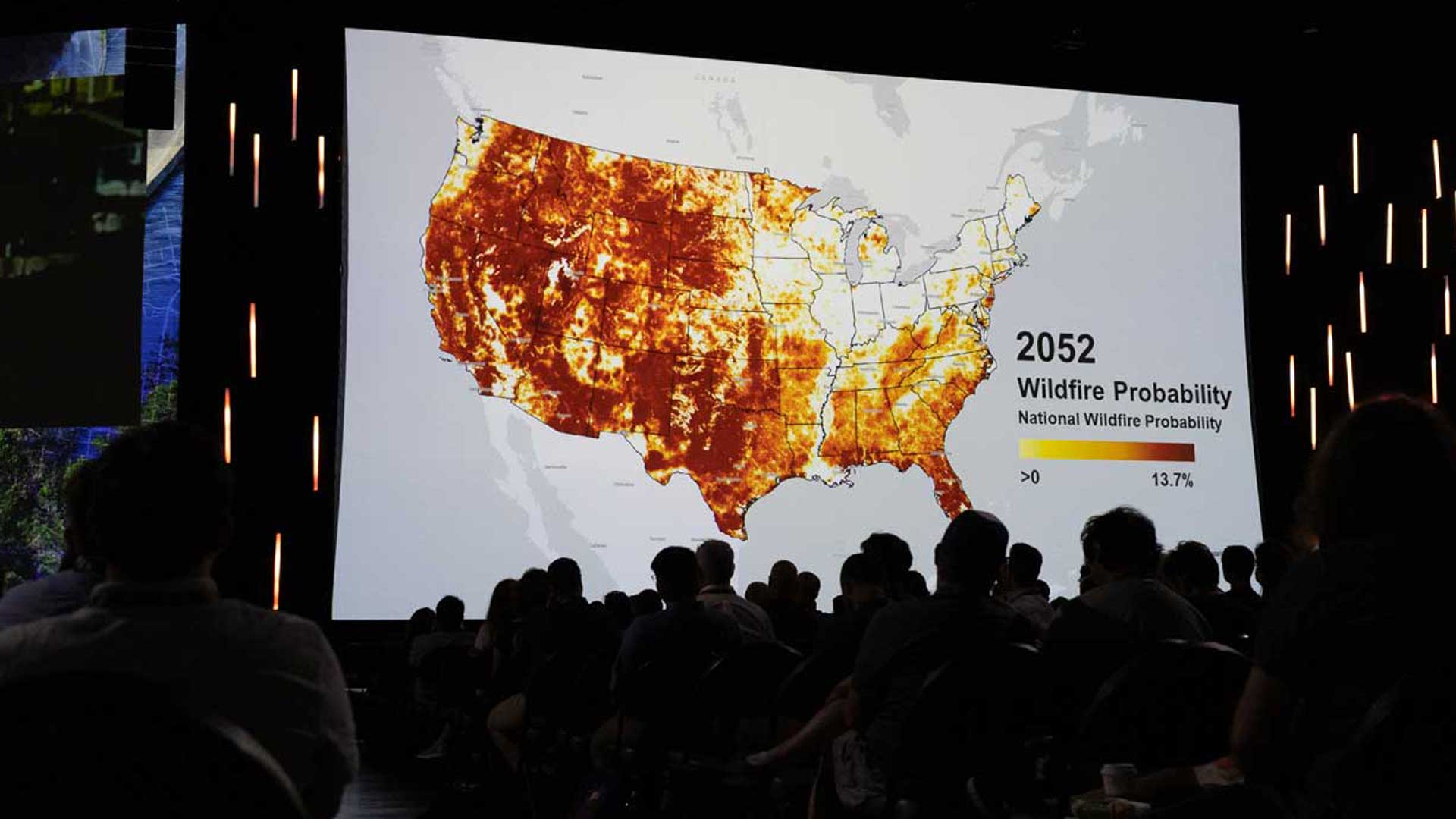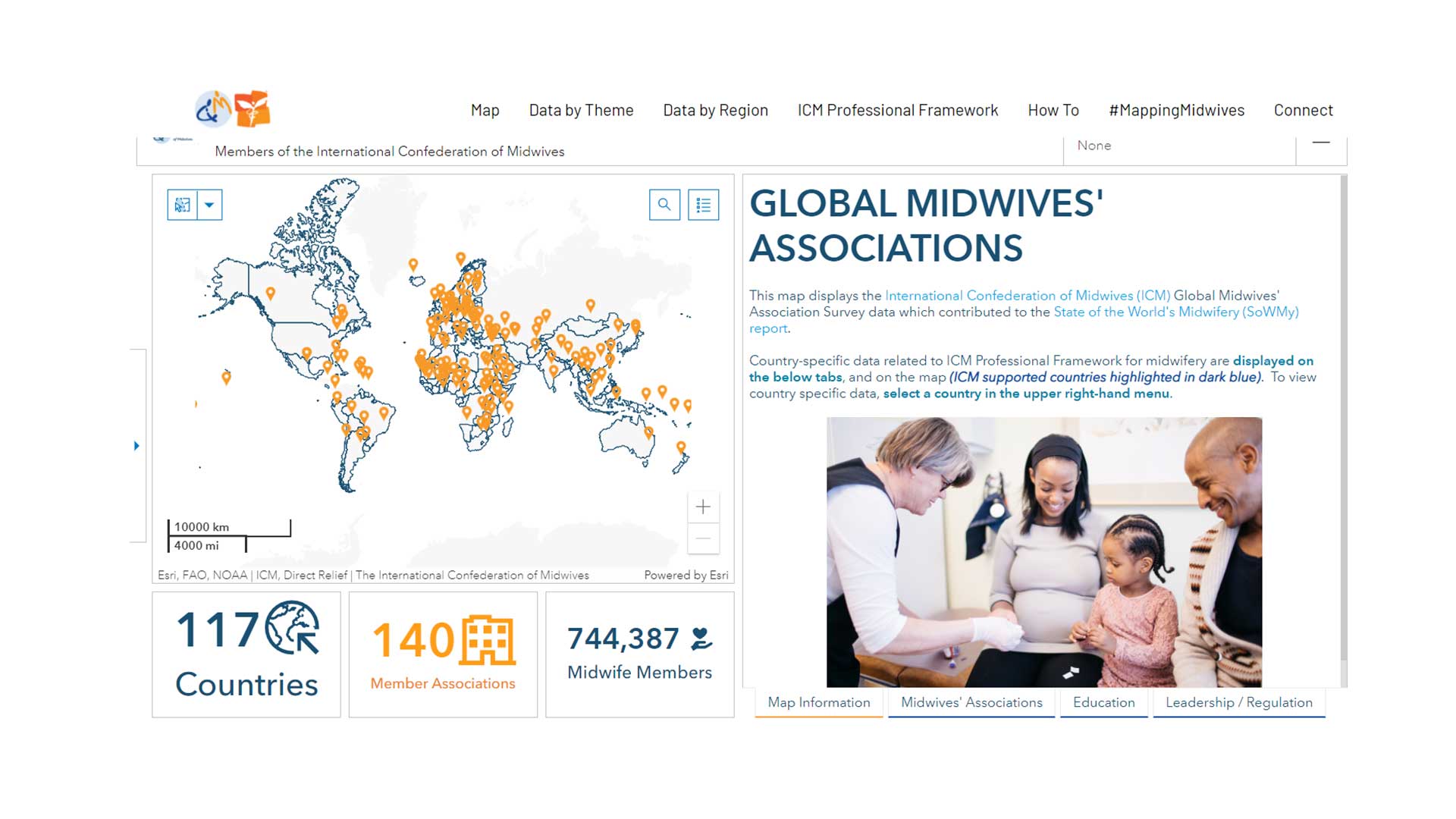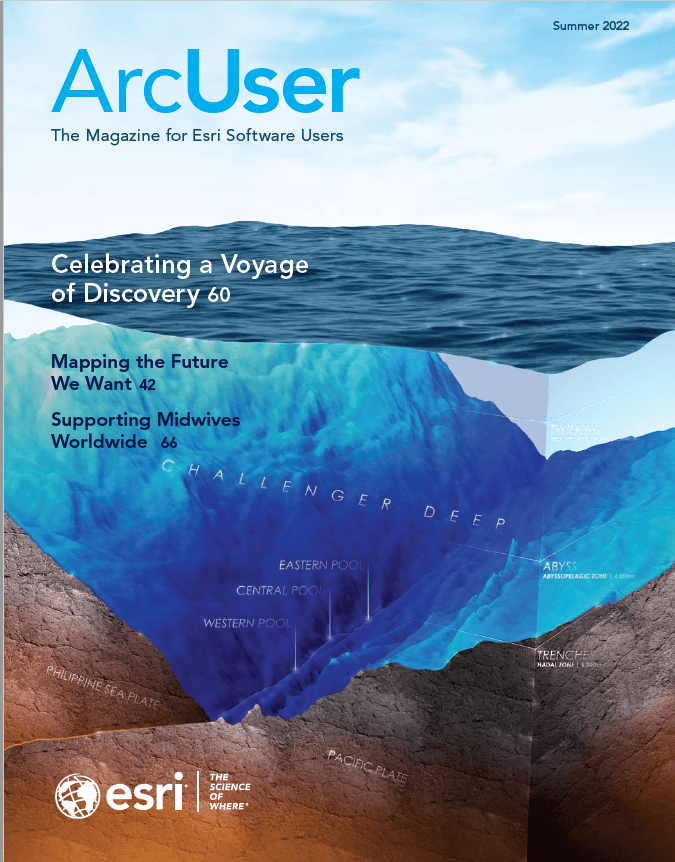After welcoming the nearly 15,000 attendees to the first in-person postpandemic Esri User Conference (Esri UC), Esri president and founder Jack Dangermond highlighted the work of the user community.
“This group is amazing. You are working on all the great challenges that our world is facing,” said Dangermond.
Users and their work are what this event has always been about. Dangermond displayed more than 200 maps from across the user community, chosen from the thousands of maps that had been submitted. They showed how GIS is being used to address the world’s most vexing problems across dozens of industries and disciplines.
Highlighting the exceptional work of GIS professionals through presentations and awards is a big part of Esri UC. This year, more than 150 organizations from around the world were honored with Special Achievement in GIS (SAG) Awards. This select group represents just one-twentieth of one percent of the organizations that use Esri technology. Although a separate ceremony was held later in the week to make individual presentations, Dangermond asked members from SAG award winning organization who were present in the Plenary Session audience—as well as representatives from organizations that were SAG Award winners in 2020 and 2021—to stand and receive the applause of their peers.
Highlights from the 2022 Esri User Conference Plenary Session
In addition to sharing and showing the valuable work of GIS professionals in government, business, research, and educational organizations, Esri UC is an opportunity to present several major awards for outstanding work.
The Making a Difference Award
The first major award presented—the Making a Difference Award—recognizes the use of GIS to contribute to a better world. The Southern California Association of Governments (SCAG) was chosen to receive this award for its pioneering work in government-to-government collaboration, which has brought 192 governments together.
An early adopter of GIS, SCAG has long been recognized as a leader in data-driven planning. SCAG’s Regional Data Platform (RDP) truly enables regional planning. RDP improves access to authoritative data, modern GIS tools, and standardized workflows for nearly half of California’s population and the largest metropolitan planning organization (MPO) in the United States. SCAG’s mission is developing long-range transportation plans and strategies for sustainable communities that support regional growth. RDP represents the implementation of geospatial infrastructure at scale.
“SCAG’s mission is to be a catalyst for a bright future, and this paves the way for that,” noted Jan Harnik, president of SCAG and the mayor of of Palm Desert, who was one of the SCAG representatives accepting the award.
The Enterprise GIS Award
Dangermond described the recipient of the Enterprise GIS Award as “one of the most sophisticated mapping organizations that I have ever encountered. They have a database of a half a billion features that is updated 20,000 times a day.” David Henderson, the chief geospatial officer at the Ordnance Survey (OS) in Great Britain, accepted the award on behalf of the more than 1,200 people who make up the team responsible for mapping at OS. “Every day we come to work to try to create great data. Data starts the journey of a great GIS,” said Henderson.
This award honors organizations that have increased efficiency, collaboration, transparency, and engagement between internal and external stakeholders. OS, which is Britain’s national mapping agency, has revolutionized how it delivers data to support its customers. Its Geospatial Production Platform (GSPP) is key to the organization’s digital transformation program. This program has reduced the cost of data capture by 67 percent and the time required for updates from 40 days to 2-5 days. End-to-end supply chain costs have been cut by 40 percent. The GSPP program is a model that other national mapping agencies can emulate in their digital transformation efforts.
The President’s Award
The final major award presented during the Plenary Session is one that is personally chosen by Dangermond. It is the highest honor given to any organization that uses data-driven decision-making to impact the world in a positive way. In 2022, the Prague Institute of Planning and Development (IPR Prague) was the award’s recipient.
IPR Prague uses GIS in its urban planning efforts to deal with the challenges caused by climate change and the lack of affordable housing. It created a public portal that provides greater visualization and analytics to guide municipal planning through digitally transforming the process to focus on sustainable solutions. Before making any changes, IPR Prague uses GIS and satellite imaging to analyze conditions and determine where actions can make the most positive effect. After implementing mitigating actions, it uses these technologies to measure the effectiveness of its efforts.
“We believe that through our actions we can make Prague a better place to live,” said Jiří Čtyroký, the director of the Spatial Information Section, who was one of the representatives from IPR Prague who accepted the award. The other representative was Ondřej Boháč, director of IPR Prague, who noted that Prague is a major tourist destination, visited by eight million people annually. He invited everyone in the audience to visit Prague, “not only because it is one of the most beautiful cities in the world, but the point is that if you all come, we will definitely get more money for GIS.”
Dangermond explained that the work of IPR Prague embodies this year’s conference theme, GIS—Mapping Common Ground. “But what touches me is that these people—bottom up—did the little things. They planted trees, got the commitment…they found common ground,” said Dangermond.
While each person might interpret the conference theme in various ways, Dangermond emphasized a specific message. “The way I think about it is that mapping is not making maps but mapping as a strategic activity. To create common ground, we have to create an agreed-upon understanding.” He believes this agreed-upon understanding is the foundation for positive action.




